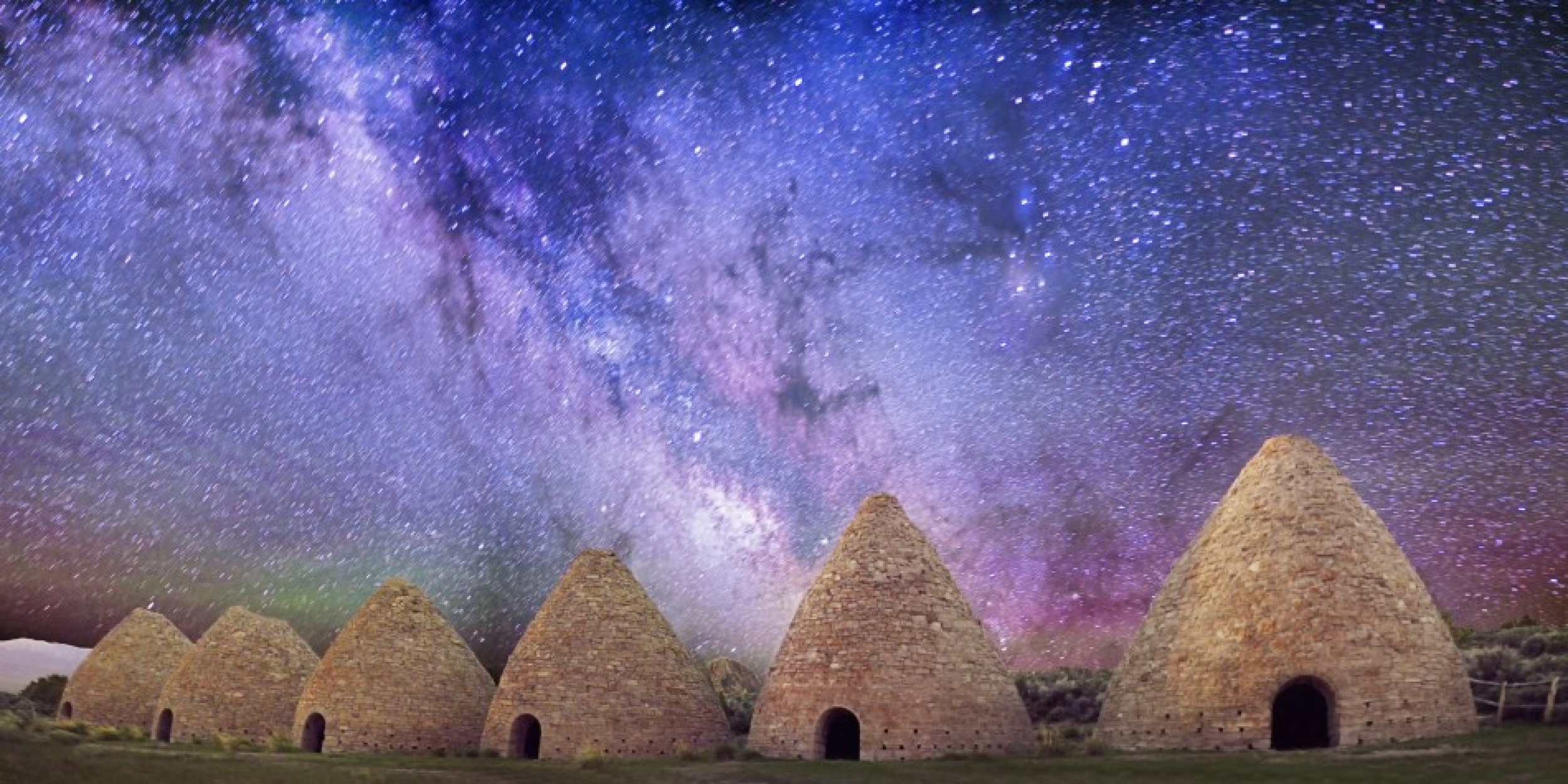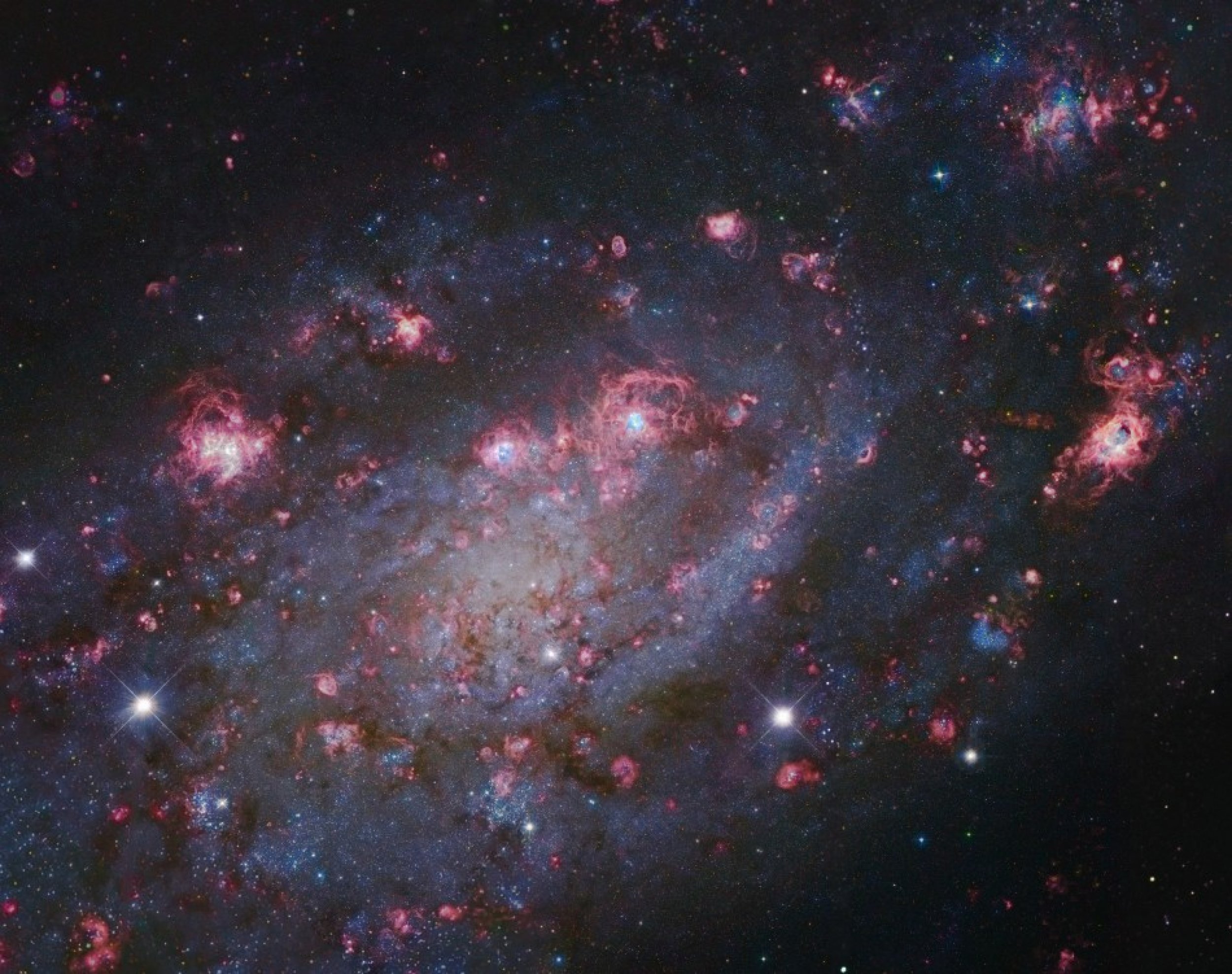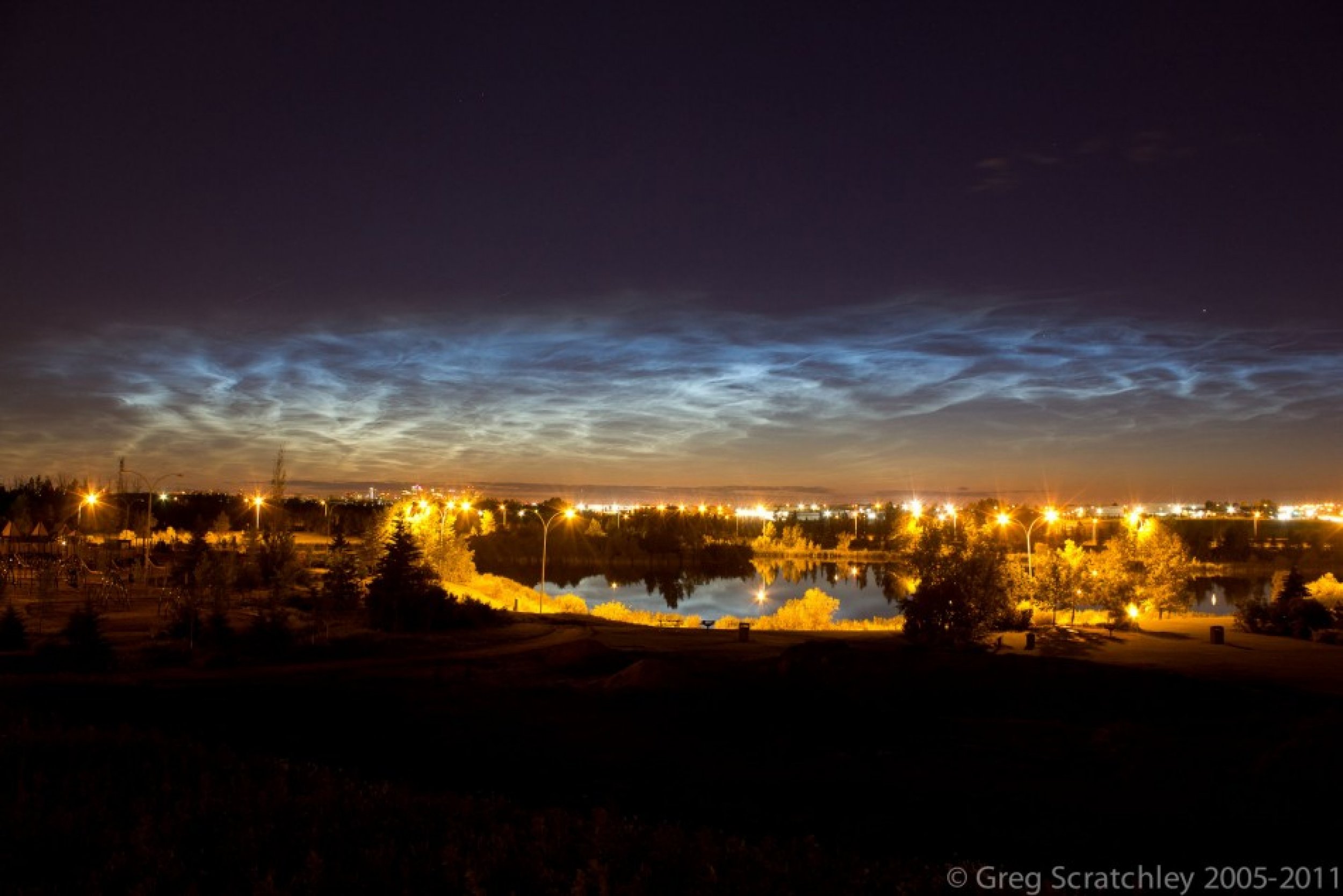Photos of the Week: Beautiful Photos of the Universe
Milky Way Over Abandoned Kilns
What's that below the Milky Way? Historic kilns. Built in the 1870s in rural Nevada, USA to process local wood into charcoal, the kilns were soon abandoned due to a town fire and flooding, but remain in good condition even today. The above panorama is a digital conglomerate of five separate images taken in early June from the same location. Visible above the unusual kilns is a colorful star field, highlighted by the central band of our Milky Way Galaxy appearing along a diagonal toward the lower right. Many famous sites in our Galaxy are visible, including the Pipe Nebula and the Dark River to Antares, seen to the right of the Milky Way. The origin of the green mist on the lower left, however, is currently unexplained.
NGC 2403 in Camelopardalis
Magnificent island universe NGC 2403 stands within the boundaries of the long-necked constellation Camelopardalis. Some 10 million light-years distant and about 50,000 light-years across, the spiral galaxy also seems to have more than its fair share of giant star forming HII regions, marked by the telltale reddish glow of atomic hydrogen gas. In fact, NGC 2403 closely resembles another galaxy with an abundance of star forming regions that lies within our own local galaxy group, M33 the Triangulum Galaxy. Of course, supernova explosions follow close on the heels of the formation of massive, short-lived stars and in 2004 one of the brightest supernovae discovered in recent times was found in NGC 2403. Easy to confuse with a foreground star in our own Milky Way Galaxy, the powerful supernova is seen here as the spiky, bright "star" at the left edge of the field. This stunning cosmic portrait is a composite of space and ground-based image data from the Hubble Legacy Archive and the 8.2 meter Subaru Telescope at the summit of Mauna Kea, Hawaii.
Noctilucent Clouds Over Edmonton
Sometimes it's night on the ground but day in the air. As the Earth rotates to eclipse the Sun, sunset rises up from the ground. Therefore, at sunset on the ground, sunlight still shines on clouds above. Under usual circumstances, a pretty sunset might be visible, but unusual noctilucent clouds float so high up they can be seen well after dark. Normally too dim to be seen, they may become visible at sunset during late summer when illuminated by sunlight from below. Noctilucent clouds are the highest clouds known and thought to be part of polar mesospheric clouds. Pictured above earlier this month, a network of noctilucent clouds cast an eerie white glow after dusk, above the the city of Edmonton, in Alberta, Canada. Much about noctilucent clouds has been discovered only over the past few years, while how they form and evolve remains a topic of active research.
Atlantis Farewell from Parkes
The Parkes 64 meter radio telescope is known for its contribution to human spaceflight, famously supplying television images from the Moon to denizens of planet Earth during Apollo 11. The enormous, steerable, single dish looms in the foreground of this early evening skyscape. Above it, the starry skies of New South Wales, Australia include familiar southerly constellations Vela, Puppis, and Hydra along with a sight that will never be seen again. Still glinting in sunlight and streaking right to left just below the radio telescope's focus cabin, the space shuttle orbiter Atlantis has just undocked with the International Space Station for the final time. The space station itself follows arcing from the lower right corner of the frame, about two minutes behind Atlantis in low Earth orbit. Atlantis made its final landing early this morning (July 21, 5:57am EDT) at NASA's Kennedy Space Center.




© Copyright IBTimes 2024. All rights reserved.











